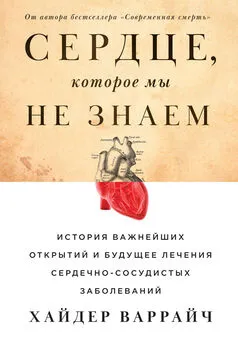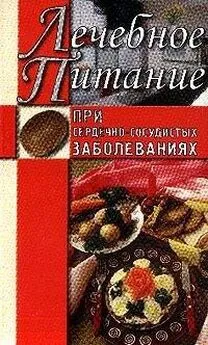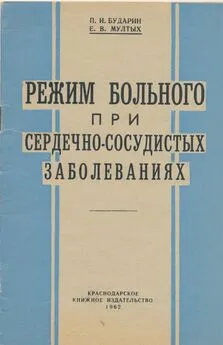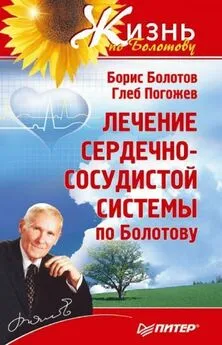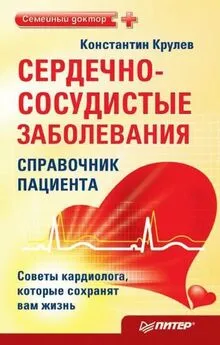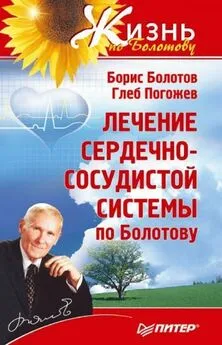Хайдер Варрайч - Сердце, которое мы не знаем. История важнейших открытий и будущее лечения сердечно-сосудистых заболеваний
- Название:Сердце, которое мы не знаем. История важнейших открытий и будущее лечения сердечно-сосудистых заболеваний
- Автор:
- Жанр:
- Издательство:Литагент Альпина
- Год:2021
- Город:Москва
- ISBN:9785961473445
- Рейтинг:
- Избранное:Добавить в избранное
-
Отзывы:
-
Ваша оценка:
Хайдер Варрайч - Сердце, которое мы не знаем. История важнейших открытий и будущее лечения сердечно-сосудистых заболеваний краткое содержание
Вы узнаете о строении и функциях сердца и коронарных сосудов, о самых распространенных болезнях, их диагностике, лекарствах, а также о плюсах и минусах популярных методов лечения – катетеризации, кардиостимуляции и электроимпульсной терапии. Книга полна историй из практики автора и его коллег и отсылок к истории медицинской науки.
Хайдер Варрайч объясняет, почему женщины страдают теми же сердечными заболеваниями, что и мужчины, но тип заболевания у них совершенно иной, что общего у коронарных и онкологических заболеваний, как эволюция могла привести нас к настоящей эпидемии ишемической болезни, рассуждает о нынешнем состоянии мировой клинической кардиологии и перспективах ее развития в эпоху внедрения искусственного интеллекта.
Сердце, которое мы не знаем. История важнейших открытий и будущее лечения сердечно-сосудистых заболеваний - читать онлайн бесплатно ознакомительный отрывок
Интервал:
Закладка:
Vaughan A. S., Ritchey M. D., Hannan J., Kramer M. R., Casper M. Widespread Recent Increases in County-Level Heart Disease Mortality Across Age Groups. Annals of Epidemiology. 2017;27:796–800.
9
Van der Linde D., Konings E. E., Slager M. A., et al. Birth Prevalence of Congenital Heart Disease Worldwide: A Systematic Review and Meta-Analysis. Journal of the American College of Cardiology. 2011;58:2241–7.
10
Hoffman J. I., Kaplan S. The Incidence of Congenital Heart Disease. Journal of the American College of Cardiology. 2002;39:1890–900.
11
National Wildlife Foundation. Animals Really Do Have Heart. http://blog.nwf.org/2013/02/amazing-animal-hearts/.
12
Woods H. A., Lane S. J., Shishido C., Tobalske B. W., Arango C. P., Moran A. L. Respiratory Gut Peristalsis by Sea Spiders. Current Biology. 2017;27: R638–9.
13
Ross J., Jr., Braunwald E. Aortic Stenosis. Circulation. 1968;38:61–7.
14
Cribier A., Savin T., Saoudi N., Rocha P., Berland J., Letac B. Percutaneous Transluminal Valvuloplasty of Acquired Aortic Stenosis in Elderly Patients: An Alternative to Valve Replacement? Lancet. 1986;1:63–7.
15
Cribier A., Eltchaninoff H., Bash A., et al. Percutaneous Transcatheter Implantation of an Aortic Valve Prosthesis for Calcific Aortic Stenosis: First Human Case Description. Circulation. 2002;106:3006–8.
16
Osler W. The Evolution of Modern Medicine. New Haven: Yale University Press; 1921.
17
Sprunt W. H. Imhotep. New England Journal of Medicine. 1955;253:778–80.
18
Haas L. F. Papyrus of Ebers and Smith. Journal of Neurology, Neurosurgery, and Psychiatry. 1999;67:578.
19
Sprunt. Imhotep.
20
Willerson J. T., Teaff R. Egyptian Contributions to Cardiovascular Medicine. Texas Heart Institute Journal. 1996;23:191–200.
21
Boisaubin E. V. Cardiology in Ancient Egypt. Texas Heart Institute Journal. 1988;15:80–5.
22
Saba M. M., Ventura H. O., Saleh M., Mehra M. R. Ancient Egyptian Medicine and the Concept of Heart Failure. Journal of Cardiac Failure. 2006;12:416–21.
23
Heberden W. Some Account of Disorder of the Breast. Medical Transactions. The Royal College of Physicians of London. 1772;2:59–67.
24
Hajar R. Coronary Heart Disease: From Mummies to 21st Century. Heart Views. 2017;18:68–74.
25
Saba, Ventura, Saleh, Mehra. Ancient Egyptian Medicine.
26
Ritner RK. The Cardiovascular System in Ancient Egyptian Thought. Journal of Near Eastern Studies. 2006;65:99–109.
27
Arikha N. Passion and Tempers: A History of the Humors. New York: Ecco; 2007.
28
Ranhel A. S., Mesquita ET. The Middle Ages Contributions to Cardiovascular Medicine. Brazilian Journal of Cardiovascular Surgery. 2016;31:163–70.
29
Masic I. On Occasion of 800th Anniversary of Birth of Ibn al-Nafis – Discoverer of Cardiac and Pulmonary Circulation. Medical Archives. 2010;64:309–13.
30
Abdel-Halim R. E. The Role of Ibn Sina (Avicenna)’s Medical Poem in the Transmission of Medical Knowledge to Medieval Europe. Urology Annals. 2014;6:1–12.
31
Loukas M., Lam R., Tubbs R. S., Shoja M. M., Apaydin N. Ibn al-Nafis (1210–1288): The First Description of the Pulmonary Circulation. American Surgeon. 2008;74:440–2.
32
West J. B. Ibn al-Nafis, the Pulmonary Circulation, and the Islamic Golden Age. Journal of Applied Physiology. 2008;105:1877–80.
33
Aird W. C. Discovery of the Cardiovascular System: From Galen to William Harvey. Journal of Thrombosis and Haemostasis. 2011;9 Suppl 1:118–29.
34
Там же.
35
Osler W. Tercentenary of the Death of William Harvey 1. The Growth of Truth. British Medical Journal. 1957;1:8 1–1263.
36
Lubitz S. A. Early Reactions to Harvey’s Circulation Theory: The Impact on Medicine. Mount Sinai Journal of Medicine. 2004;71:274–80.
37
French R. William Harvey’s Natural Philosophy. Cambridge, UK: Cambridge University Press; 1994.
38
Lubitz. Early Reactions.
39
Erickson R. The Language of the Heart, 1600–1750. Philadelphia, PA: University of Pennsylvania Press 1997.
40
Benjamin E. J., Virani S. S., Callaway C. W., et al. Heart Disease and Stroke Statistics-2018 Update: A Report From the American Heart Association. Circulation. 2018;137: e67-e492.
41
President Eisenhower’s $14 Billion Heart Attack. 2016. www.ozy.com/flashback/president-eisenhowers-14-billion-heart-attack/65157.
42
Lasby C. G. Eisenhower’s Heart Attack: How Ike Beat Heart Disease and Held On to the Presidency. Lawrence, KS: University Press of Kansas; 1997.
43
Bentzon J.F, Otsuka F., Virmani R., Falk E. Mechanisms of Plaque Formation and Rupture. Circulation Research. 2014;114:1852–66.
44
Strong J. P., Malcom G. T., McMahan C.A., et al. Prevalence and Extent of Atherosclerosis in Adolescents and Young Adults: Implications for Prevention from the Pathobiological Determinants of Atherosclerosis in Youth Study. Journal of the American Medical Association. 1999;281:727–35.
45
Giuseppe Zoccai, Mariangela Peruzzi, Enrico Romagnoli. Is the Pathophysiology of Plaque Injury in Acute MI Changing? Revisiting Plaque Erosion vs. Rupture. 2016. www.acc.org/latest-in-cardiology/articles/2016/02/26/09/34/is-the-pathophysiology-of-plaque-injury-in-acute-mi-changing.
46
Stefanadis C., Antoniou C. K., Tsiachris D., Pietri P. Coronary Atherosclerotic Vulnerable Plaque: Current Perspectives. Journal of the American Heart Association. 2017;6.
47
Milton K. Back to Basics: Why Foods of Wild Primates Have Relevance for Modern Human Health. Nutrition. 2000;16:480–3.
48
Pijl H. Obesity: Evolution of a Symptom of Affluence. Netherlands Journal of Medicine. 2011;69:159–66.
49
Fish J. L., Lockwood C. A. Dietary Constraints on Encephalization in Primates. American Journal of Physical Anthropology. 2003;120:171–81.
50
The Oldest Homo Sapiens Yet. Economist. June 10, 2017.
51
Neel J. V. Diabetes Mellitus: a “Thrifty” Genotype Rendered Detrimental by “Progress”? American Journal of Human Genetics. 1962;14:353–62.
52
Stern M. P. Diabetes and Cardiovascular Disease. The “Common Soil” Hypothesis. Diabetes. 1995;44:369–74.
53
Fernandez-Real J.M., Ricart W. Insulin Resistance and Inflammation in an Evolutionary Perspective: The Contribution of Cytokine Genotype/Phenotype to Thriftiness. Diabetologia. 1999;42:1367–74.
54
Wells J. C. Ethnic Variability in Adiposity and Cardiovascular Risk: The Variable Disease Selection Hypothesis. International Journal of Epidemiology. 2009;38:63–71.
55
Warraich H. J., Javed F., Faraz-Ul-Haq M., Khawaja F.B, Saleem S. Prevalence of Obesity in School-Going Children of Karachi. PLOS ONE. 2009;4: e4816.
56
Thomas G.S, Wann L.S, Allam A. H., et al. Why Did Ancient People Have Atherosclerosis?: From Autopsies to Computed Tomography to Potential Causes. Global Heart. 2014;9:229–37.
57
Keller A., Graefen A., Ball M., et al. New Insights into the Tyrolean Iceman’s Origin and Phenotype as Inferred by Whole-Genome Sequencing. Nature Communications. 2012;3:698.
58
Ruffer M. A. On Arterial Lesions Found in Egyptian Mummies (1580 BC-525 AD). Journal of Pathology and Bacteriology. 1911;15.
59
Thompson R.C, Allam A.H, Lombardi G. P., et al. Atherosclerosis Across 4000 Years of Human History: The Horus Study of Four Ancient Populations. Lancet. 2013;381:1211–22.
60
Death Rates for 1911 in the United States and its Large Cities. Boston Medical and Surgical Journal. 1912; CLXVI:63–4.
61
Gurven M., Stieglitz J., Trumble B., et al. The Tsimane Health and Life History Project: Integrating anthropology and biomedicine. Evolutionary Anthropology. 2017;26:54–73.
62
Packard R. R., Libby P. Inflammation in Atherosclerosis: From Vascular Biology to Biomarker Discovery and Risk Prediction. Clinical Chemistry. 2008;54:24–38.
63
Shaharyar S., Warraich H., McEvoy J.W., et al. Subclinical Cardiovascular Disease in Plaque Psoriasis: Association or Causal Link? Atherosclerosis. 2014;232:72–8.
64
Hemkens L. G., Ewald H., Gloy V. L., et al. Colchicine for Prevention of Cardiovascular Events. Cochrane Database of Systematic Reviews. 2016: CD011047.
65
De Vecchis R., Baldi C., Palmisani L. Protective Effects of Methotrexate Against Ischemic Cardiovascular Disorders in Patients Treated for Rheumatoid Arthritis or Psoriasis: Novel Therapeutic Insights Coming from a Meta-Analysis of the Literature Data. Anatolian Journal of Cardiology. 2016;16:2–9.
66
Ridker P. M., Everett B. M., Thuren T., et al. Antiinflammatory Therapy with Canakinumab for Atherosclerotic Disease. New England Journal of Medicine. 2017;377:1119–31.
67
Lerner B. H. Crafting Medical History: Revisiting the “Definitive” Account of Franklin D. Roosevelt’s Terminal Illness. Bulletin of the History of Medicine. 2007;81:386–406.
68
Bruenn H. G. Clinical Notes on the Illness and Death of President Franklin D. Roosevelt. Annals of Internal Medicine. 1970;72:579–91.
69
Pinals R. S., Smulyan H. The death of President Warren G. Harding. American Journal of the Medical Sciences. 2014;348:232–7.
70
Chen G., Levy D. Contributions of the Framingham Heart Study to the Epidemiology of Coronary Heart Disease. JAMA Cardiology. 2016;1:825–30.
71
Mahmood S. S., Levy D., Vasan R. S., Wang T. J. The Framingham Heart Study and the Epidemiology of Cardiovascular Disease: A Historical Perspective. Lancet. 2014;383:999–1008.
72
Dawber T. R., Moore F. E., Mann G. V. Coronary Heart Disease in the Framingham Study. American Journal of Public Health and the Nation’s Health. 1957;47:4–24.
73
Kannel W. B., Dawber T. R., Kagan A., Revotskie N., Stokes J., 3rd. Factors of Risk in the Development of Coronary Heart Disease – Six Year Follow-Up Experience. The Framingham Study. Annals of Internal Medicine. 1961;55:33–50.
Читать дальшеИнтервал:
Закладка:
